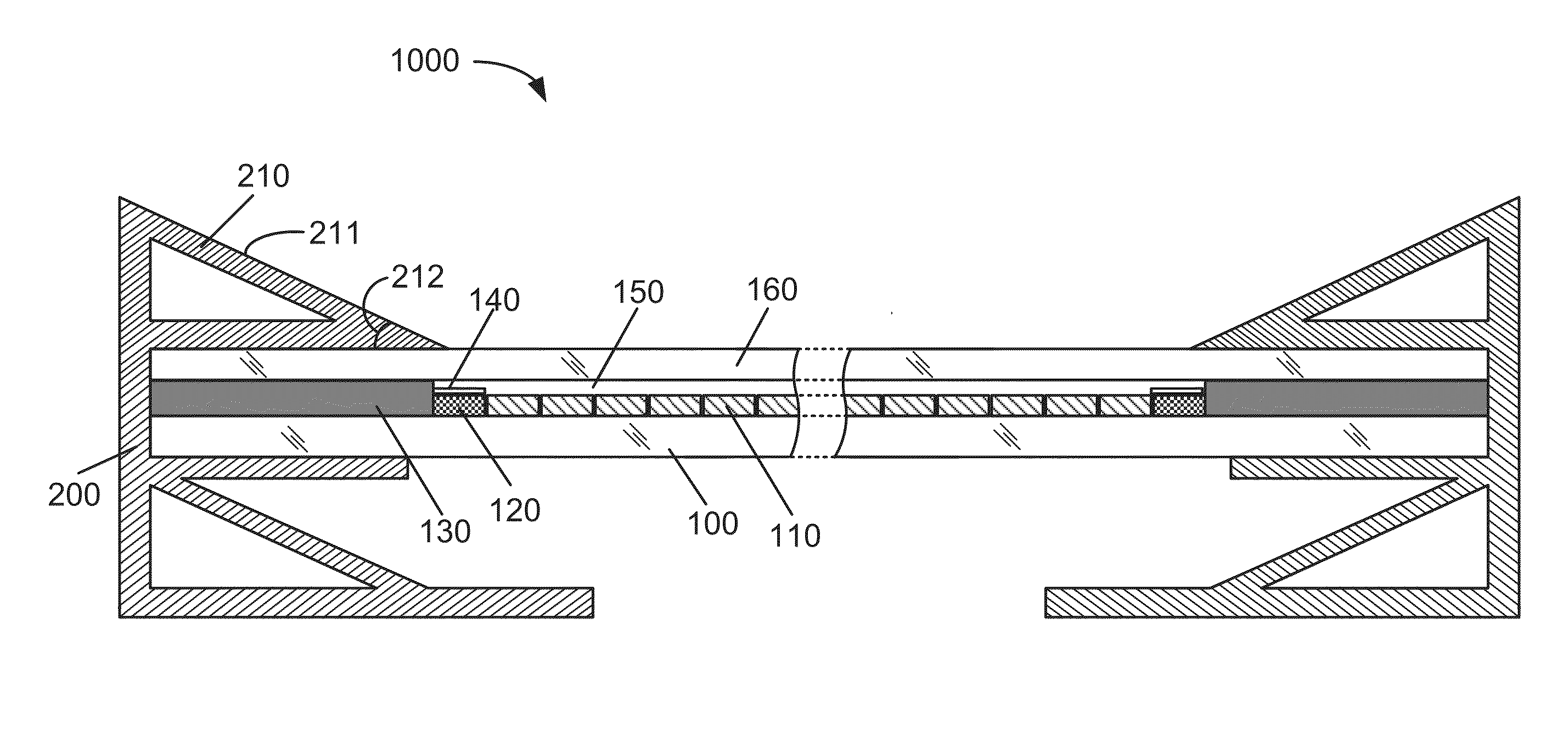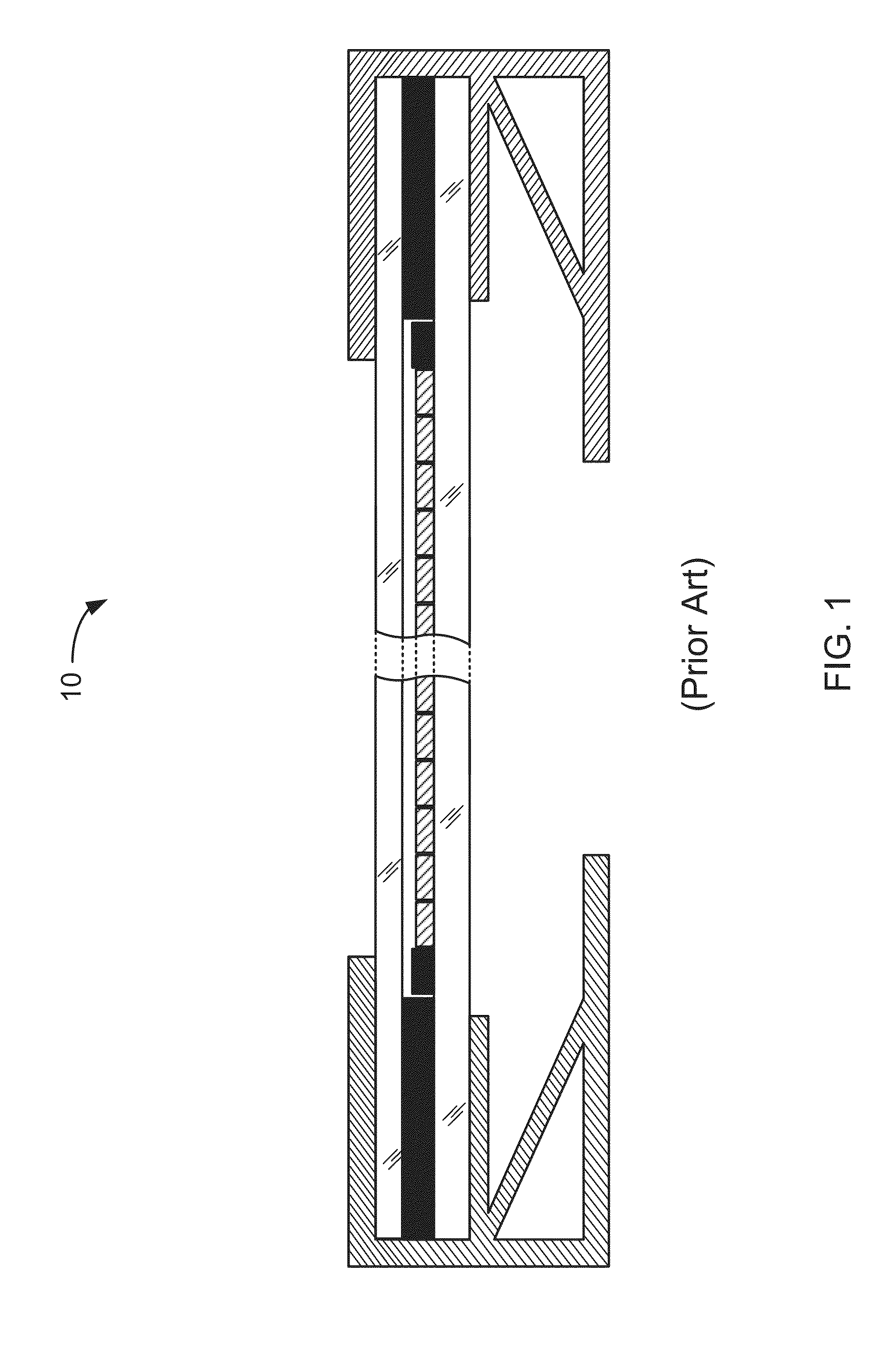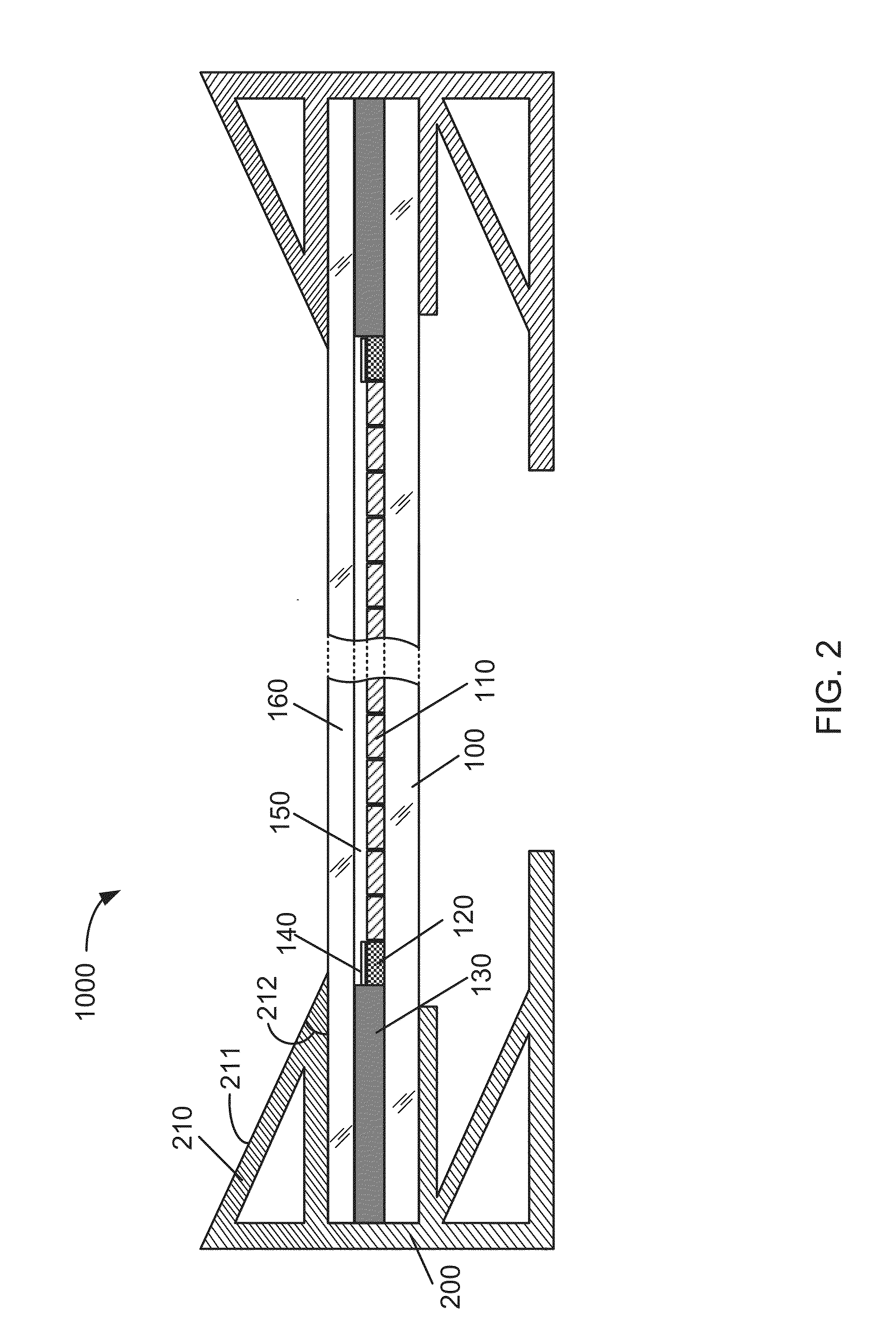Solar module apparatus with edge reflection enhancement and method of making the same
a solar module and edge light reflection technology, applied in the field of solar modules, can solve the problems of reducing the efficiency of solar energy production, so as to achieve enhanced edge light reflection and enhance edge light reflection. effect, the effect of enhancing the efficiency
- Summary
- Abstract
- Description
- Claims
- Application Information
AI Technical Summary
Benefits of technology
Problems solved by technology
Method used
Image
Examples
Embodiment Construction
[0019]The present invention relates generally to techniques for the manufacture of photovoltaic devices. More particularly, the present invention provides a solar module with light reflection enhancement around peripheral edge regions and a method of making the same. Merely by way of examples, the present method is applied to integrate solar modules or solar module array with edge reflection-enhancement, but it would be recognized that the invention may have other applications.
[0020]FIG. 2 is a simplified cross sectional diagram of a framed solar module with edge reflection enhancement according to an embodiment of the present invention. This diagram is merely an example, which should not unduly limit the scope of the claims herein. As shown, the framed solar module 1000 is monolithically integrated based on thin-film photovoltaic active material that formed on a glass substrate 100. In an example, the glass substrate 100 can have various sizes ranging from 6 inch square, 12 inch sq...
PUM
 Login to View More
Login to View More Abstract
Description
Claims
Application Information
 Login to View More
Login to View More - R&D
- Intellectual Property
- Life Sciences
- Materials
- Tech Scout
- Unparalleled Data Quality
- Higher Quality Content
- 60% Fewer Hallucinations
Browse by: Latest US Patents, China's latest patents, Technical Efficacy Thesaurus, Application Domain, Technology Topic, Popular Technical Reports.
© 2025 PatSnap. All rights reserved.Legal|Privacy policy|Modern Slavery Act Transparency Statement|Sitemap|About US| Contact US: help@patsnap.com



